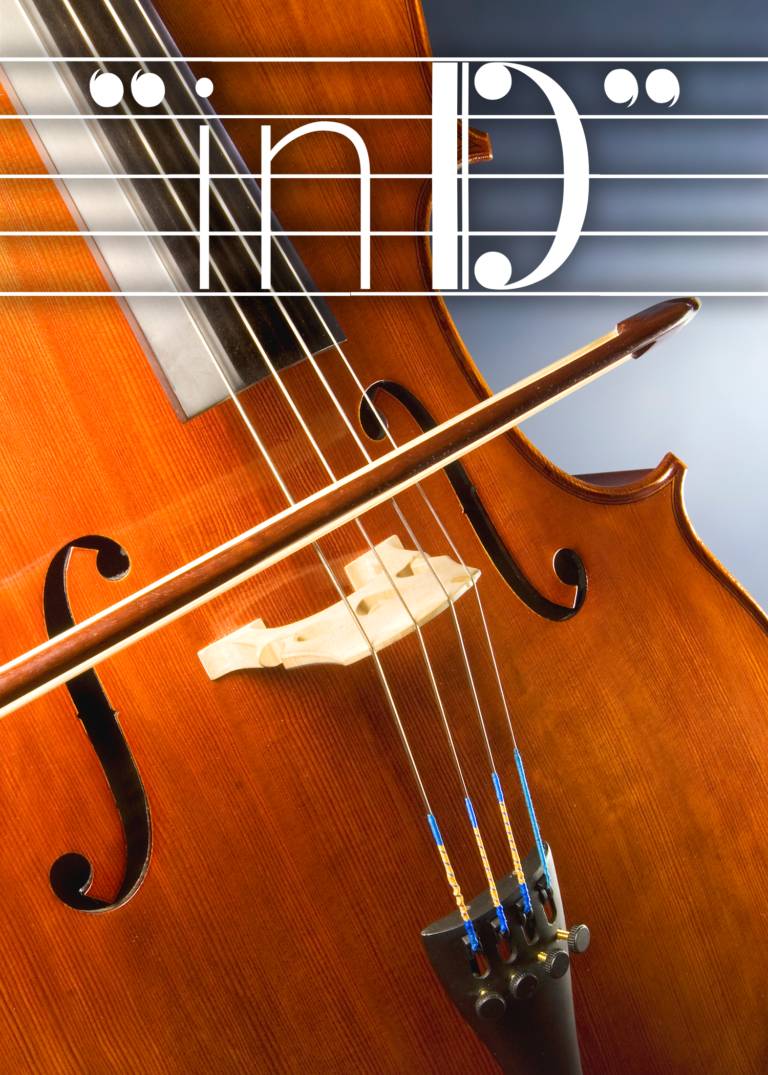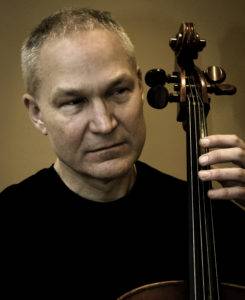
Available online from November 1st through November 28th, 2020
Approx. one hour long
Through a partnership with ShowTix4U.com, Old Academy Players At Home has expanded our offerings to include pieces and performances that could not be shared on YouTube. Once you’ve made a purchase from ShowTix4U.com, you will be able to view the piece as many times as you like for 48 hours, on one device at a time.
A professional cello recital with Juilliard-trained Richard Maurer, featuring works by Gabrielli, Tchaikovsky, and Bach.
Program Notes
Gabrielli Ricercare in d minor and D Major
I first heard of the Gabrielli Ricerare for solo cello in the early 1980s, from the director of an early music ensemble. The Italian word Ricercare means to seek an answer, basically “research,” and that’s what these pieces do, in the keys of d minor and then D major. They start simple, but get steadily more complex. Back then, I could not relate to the Ricercare – they were notey in the extreme, but without an opportunity to show off high technique. My first teacher told me that the sign of a cellist who had made it was a callus on the left thumb, proving a whole lot of time spent up in what we call Thumb Position. I had already spent years on low register technique as a young student, and these pieces were more of the same. They lacked the harmonic drive of the Bach suites, and were also more difficult to memorize. So I shelved them.
I looked at the Ricercare again during the stay at home phase of the pandemic, and now see two of them differently. The lack of harmonic tension makes them almost minimalistic, in a good way. They tell a subtle story. And my concern about tonal monotony – chugging away in the lower registers – was solved, by occasionally bringing passages up one octave. Doing this with the Bach cello suites would be heresy, but is legitimate here. Why? Because the scores that have come down to us from 350 years ago are likely sketches of live performances that were a bit different each time. Also, Gabrielli’s cello was better equipped to spend an entire performance in the lower register. The cellos of his day were about a third again bigger than this one, yielding an instrument that would have provided more bass, perfect to fill up the halls of a renaissance palazzo in Bologna.
These pieces have a place in the solo repertoire I tend to focus on, because they sound so uniquely old. Music tends to be the last of the arts to adopt new trends. For example, English romantic literature began around the 1760s, while what we call “romantic” music – Schumann, Chopin and of course Brahms — did not become ubiquitous until the 1840s. These pieces are similar. While written around 1680 (five years before Bach was born), they sound more like the court music of Queen Elizabeth I, who reigned until 1603. They exemplify the last decades of renaissance music, in a way that looks back fondly.
Boris Chaikovsky Suite for Solo Cello in D minor
While the United States won the Cold War of politics, it lost on the musical front. Soviet composers reached incredible heights in the 1950s and 60s, with frequent first performances of new symphonies and concertos by Prokofiev, Shostakovich, Kabalevsky, Khatchaturian and many others. The Chaikovsky solo suite was written around 1960, the same year when Premier Nikita Khrushchev famously banged his shoe on a U.N. Podium to emphasize the inexorable triumph of the Soviet Bloc. Chaikovsky uses some modern effects, for example the super high register and plucking of the slow movement. But he does it all within an expanded yet recognizable d minor and D major tonality. He was a student of Shostakovich, but grew up in a more peaceful time. Unlike his teacher, Chaivoksky did not endure the 400-day siege of Leningrad. And unlike visual arts of the time, Soviet music was not saturated with Communist ideology.
Meanwhile in New York City and Princeton, music was taking a different turn. The 1950s were the height of atonal music in the United States, and for a while, there was a consensus in academia that music without a pitch center or rhythmic pulse was the inevitable wave of the future. Confirming this, the American composer Milton Babbitt wrote an article in High Fidelity titled “Who Cares if You Listen.” The article came out in February of 1958, two years before the Chaikovsky suite. The following passage summarizes Babbitt’s view of music as science:
I dare suggest that the composer would do himself and his music an immediate and eventual service by total, resolute, and voluntary withdrawal from this public world to one of private performance and electronic media, with its very real possibility of complete elimination of the public and social aspects of musical composition. By so doing, the separation between the domains would be defined beyond any possibility of confusion, and the composer would be free to pursue a private life of professional achievement, as opposed to a public life of unprofessional compromise and exhibitionism.
Babbitt might regard this recital as an embarrassing display of public exhibitionism, and encourage me to go back home to pursue “professional achievement.” But there’s no doubt that Chaikovsky and Shostakovich would tell me otherwise – that the show must go on.
Reflections on Bach Suite no. 2 in D minor
I learned this Suite at a Colorado summer music camp in 1982. At the time, the only recording I had was a set of Pablo Casals LPs from the 1930s. I found the first movement to be slow and boring, so I started with the faster last movement and worked my way backwards. I especially liked the crunchy block chords of the minuets, they sounded like something the Clash might play in 1720. To memorize the suite, I wrote out the movement I was currently working on before crawling into my sleeping bag for the night. I had a mild fever during the first performance, which helped because it made me less nervous. I got sick a lot back then, mainly the result of overwork and poor nutrition. I did not start practicing four hours a day until I was 15, which meant I had a lot of catching up to do. Perhaps due to concentrating on academics before music, Bach was always a strong point, so I focused more than most on these pieces. The d minor suite has proven to be useful over the years, at recital, in church, on stages as the solo cellist in Elephant Man, and at more than one funeral.
These pieces are 300 years old now, and it seems likely they will still be around for 300 more. They are achieving the status of fundamental inventions, like the arch, the wheel, or ancient paintings by Brueghel or Rembrandt. It’s been my privilege to work on them for the past 40 years or so.
Richard Maurer
Philadelphia, Pennsylvania
September 26, 2020
Meet the Cast

Richard Maurer (Cellist)
Richard graduated from the Juilliard School in 1989, with a degree in cello performance. He won the Aspen Cello Competition in 1986, and in 1988 served as Principal Cellist of the Schleswig-Holstein Festival Orchestra under the direction of Sergiu Celibidache. While a student at Georgetown University Law Center, Richard performed regularly with the National Chamber Orchestra. After passing the bar, he continued to give recitals, often focused on the Bach suites and other works for solo cello. Previously a partner at White and Williams, Richard formed his own law firm in 2011. A resident of East Falls, Richard played live cello during the Old Academy productions of Melancholy Play and The Elephant Man.